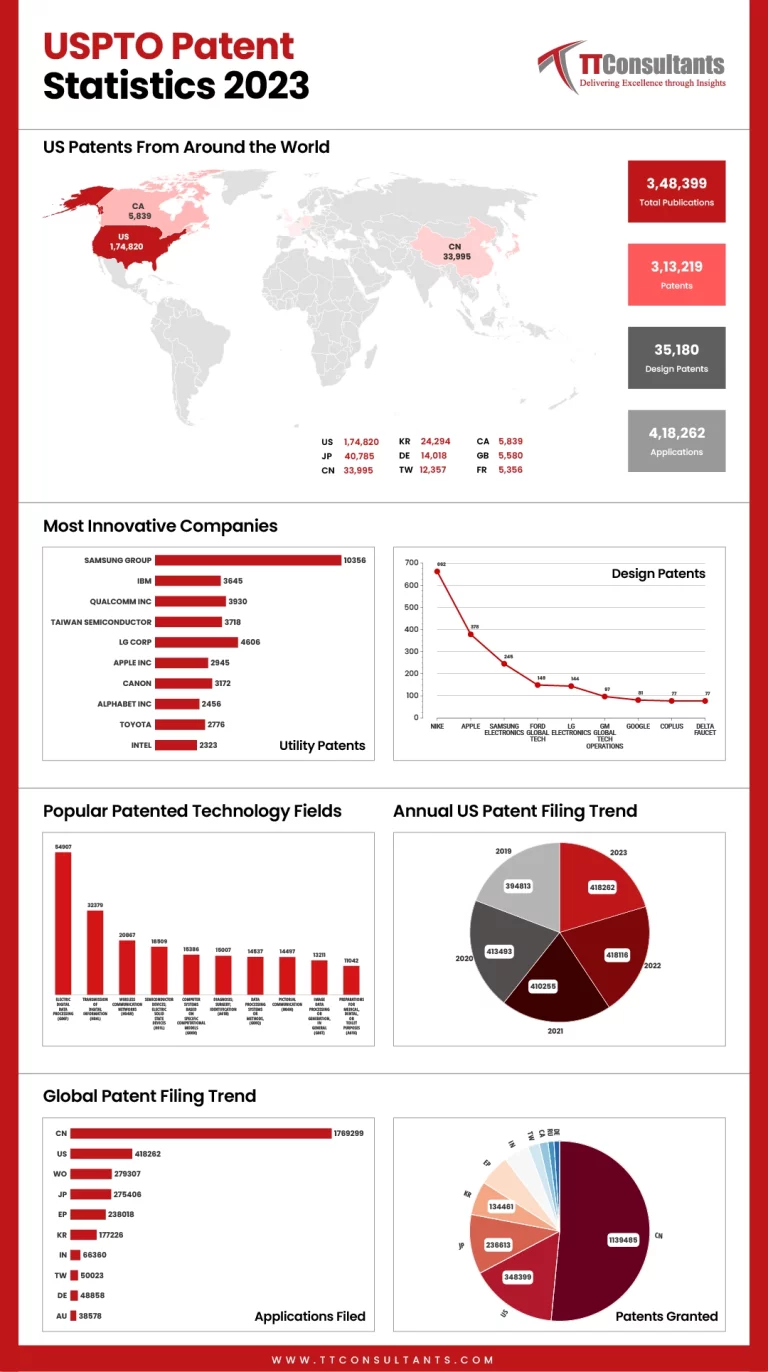he data on patents granted in various International Patent Classification (IPC) categories in 2023 gives us a window into the innovation trends and the technological areas that are receiving the most attention.
Electric Digital Data Processing (G06F) leads significantly with 54,907 patents granted. This category is broad, encompassing various aspects of computing, and reflects the rapid growth and importance of digital technologies in every facet of modern life.
Transmission of Digital Information (H04L), with 32,379 patents, highlights the importance of telecommunications and the internet, which are foundational to our connected society.
Wireless Communication Networks (H04W) received 20,867 patents, underlining the continued expansion and innovation of mobile technologies and the push towards more advanced and efficient wireless communication systems.
Semiconductor Devices (H01L), which are critical for all electronic devices, saw 18,509 patents granted, indicating ongoing advancements in the materials and processes that power our devices.
Computer Systems Based on Specific Computational Models (G06N), with 15,386 patents, shows an interest in developing new computing paradigms, such as quantum computing or neural networks.
The field of Diagnosis, Surgery, and Identification (A61B) had 15,007 patents, which points to the continuous innovation in medical technologies and healthcare.
Data Processing Systems or Methods (G06Q) encompasses patents for business methods and software, with 14,537 patents granted, reflecting the ongoing digitization of commerce and services.
Pictorial Communication, like Television (H04N), received 14,497 patents, suggesting ongoing innovation in visual media and broadcasting technologies.
Image Data Processing or Generation (G06T), with 13,211 patents, is indicative of advances in areas like computer graphics, virtual reality, and image recognition technologies.
Lastly, Preparations for Medical, Dental, or Toilet Purposes (A61K), which includes pharmaceutical compositions, accounted for 11,042 patents, pointing to the significant research and development in the pharmaceutical industry.
These numbers not only reveal where R&D resources are being allocated but also where we might expect to see significant technological advancements and new product developments in the coming years. The findings underscore the importance of continued innovation in digital technologies and healthcare, which seem to be the leading areas of focus based on the number of patents granted.






